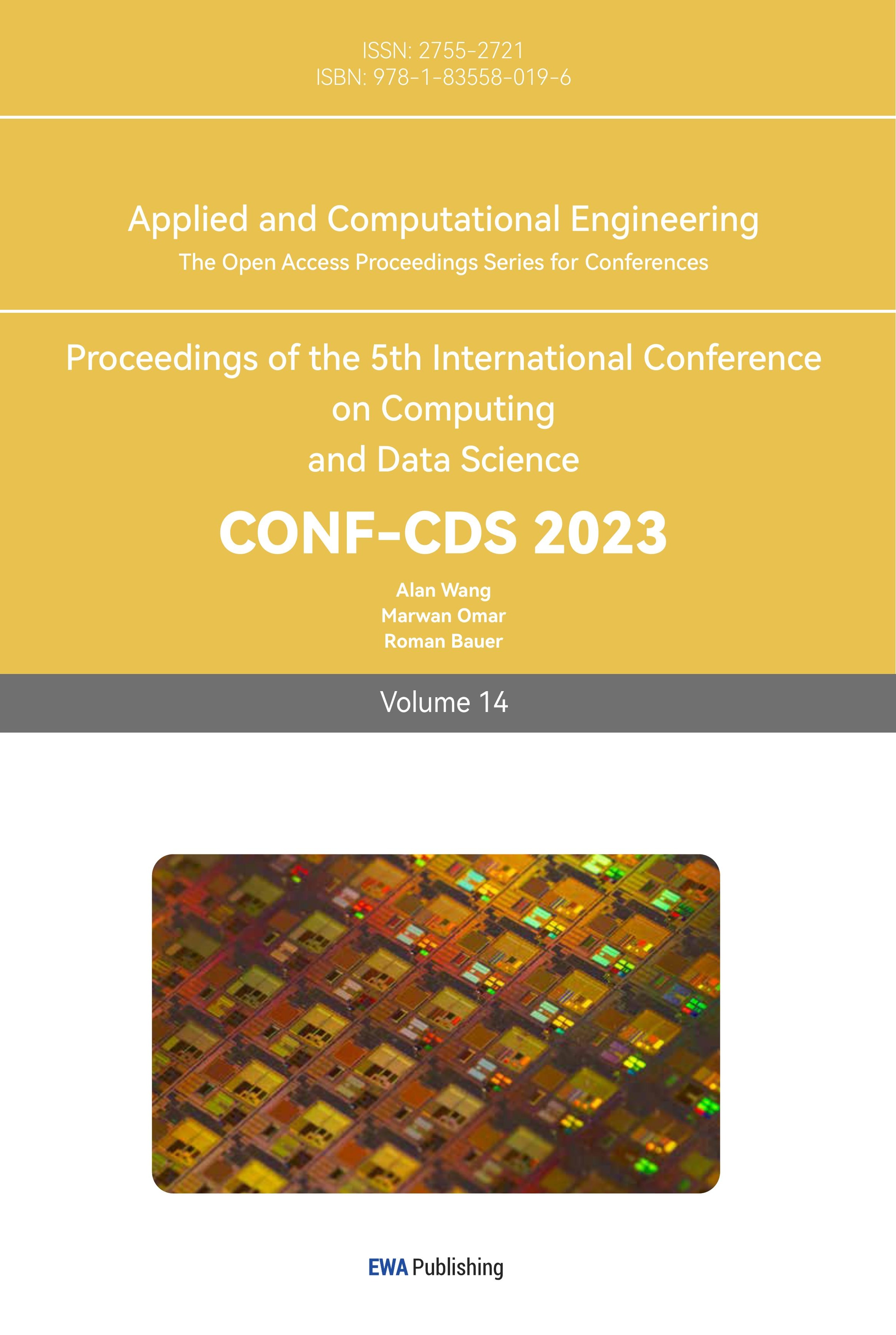References
[1]. Trusov, M., Ma, L., & Jamal, Z. (2016). Crumbs of the Cookie: User Profiling in Customer-Base Analysis and Behavioral Targeting. Marketing Science (Providence, R.I.), 35(3), 405-426.
[2]. Anderson, B., Vance, A., Kirwan, C., Jenkins, J., & Eargle, D. (2016). From Warning to Wallpaper: Why the Brain Habituates to Security Warnings and What Can Be Done About It. Journal of Management Information Systems, 33(3), 713-743.
[3]. Gao, Y. (2022). The development of big data in the context of the Law of the People's Republic of China on the Protection of Personal Information[J]. Library Theory and Practice, (4): 4-11.
[4]. Shao M. (2021). Research on the legal protection of personal information in data applications[J]. Legal Expo, (05): 65-66.
[5]. Chen, H. (2018). Revisiting the Privacy Paradox on Social Media With an Extended Privacy Calculus Model: The Effect of Privacy Concerns, Privacy Self-Efficacy, and Social Capital on Privacy Management. The American Behavioral Scientist (Beverly Hills), 62(10), 1392-1412.
[6]. Honerkamp, V. (2020). Predictors of avoidance towards personalization of restaurant smartphone advertising [Summary].
[7]. Park, J. (2014). The effects of personalization on user continuance in social networking sites. Information Processing & Management, 50(3), 462-475.
[8]. ur Rehman, I. (2019). Facebook-Cambridge Analytica data harvesting: What you need to know. Library Philosophy and Practice, 1-11.
[9]. Huang, L. (2021). On the Protection of Privacy in the Internet Era[J]. Business Intelligence, (8): 254
[10]. Kuhn, M. (2018). 147 Million Social Security Numbers for Sale: Developing Data Protection Legislation After Mass Cybersecurity Breaches. Iowa Law Review, 104(1), 417-445.
[11]. Botsman, R. Who can you trust?: how technology brought us together–and why it could drive us apart. Penguin UK, 2017.
[12]. Ding, Z., Yang, R., Cui, P., Zhou, M., & Jiang, C. (2022). Variable Petri Nets for Mobility. IEEE Transactions on Systems, Man, and Cybernetics. Systems, 52(8), 4784-4797.
[13]. Liu, Y. (2023). The dilemma of consent notification rules for personal information processing and suggestions for improvement: interpretation and reflection based on the Law of the People's Republic of China on the Protection of Personal Information[J]. Media, (1): 73-76.
Cite this article
Qin,X. (2023). App design based on the protection of personal privacy information in China. Applied and Computational Engineering,14,132-144.
Data availability
The datasets used and/or analyzed during the current study will be available from the authors upon reasonable request.
Disclaimer/Publisher's Note
The statements, opinions and data contained in all publications are solely those of the individual author(s) and contributor(s) and not of EWA Publishing and/or the editor(s). EWA Publishing and/or the editor(s) disclaim responsibility for any injury to people or property resulting from any ideas, methods, instructions or products referred to in the content.
About volume
Volume title: Proceedings of the 5th International Conference on Computing and Data Science
© 2024 by the author(s). Licensee EWA Publishing, Oxford, UK. This article is an open access article distributed under the terms and
conditions of the Creative Commons Attribution (CC BY) license. Authors who
publish this series agree to the following terms:
1. Authors retain copyright and grant the series right of first publication with the work simultaneously licensed under a Creative Commons
Attribution License that allows others to share the work with an acknowledgment of the work's authorship and initial publication in this
series.
2. Authors are able to enter into separate, additional contractual arrangements for the non-exclusive distribution of the series's published
version of the work (e.g., post it to an institutional repository or publish it in a book), with an acknowledgment of its initial
publication in this series.
3. Authors are permitted and encouraged to post their work online (e.g., in institutional repositories or on their website) prior to and
during the submission process, as it can lead to productive exchanges, as well as earlier and greater citation of published work (See
Open access policy for details).
References
[1]. Trusov, M., Ma, L., & Jamal, Z. (2016). Crumbs of the Cookie: User Profiling in Customer-Base Analysis and Behavioral Targeting. Marketing Science (Providence, R.I.), 35(3), 405-426.
[2]. Anderson, B., Vance, A., Kirwan, C., Jenkins, J., & Eargle, D. (2016). From Warning to Wallpaper: Why the Brain Habituates to Security Warnings and What Can Be Done About It. Journal of Management Information Systems, 33(3), 713-743.
[3]. Gao, Y. (2022). The development of big data in the context of the Law of the People's Republic of China on the Protection of Personal Information[J]. Library Theory and Practice, (4): 4-11.
[4]. Shao M. (2021). Research on the legal protection of personal information in data applications[J]. Legal Expo, (05): 65-66.
[5]. Chen, H. (2018). Revisiting the Privacy Paradox on Social Media With an Extended Privacy Calculus Model: The Effect of Privacy Concerns, Privacy Self-Efficacy, and Social Capital on Privacy Management. The American Behavioral Scientist (Beverly Hills), 62(10), 1392-1412.
[6]. Honerkamp, V. (2020). Predictors of avoidance towards personalization of restaurant smartphone advertising [Summary].
[7]. Park, J. (2014). The effects of personalization on user continuance in social networking sites. Information Processing & Management, 50(3), 462-475.
[8]. ur Rehman, I. (2019). Facebook-Cambridge Analytica data harvesting: What you need to know. Library Philosophy and Practice, 1-11.
[9]. Huang, L. (2021). On the Protection of Privacy in the Internet Era[J]. Business Intelligence, (8): 254
[10]. Kuhn, M. (2018). 147 Million Social Security Numbers for Sale: Developing Data Protection Legislation After Mass Cybersecurity Breaches. Iowa Law Review, 104(1), 417-445.
[11]. Botsman, R. Who can you trust?: how technology brought us together–and why it could drive us apart. Penguin UK, 2017.
[12]. Ding, Z., Yang, R., Cui, P., Zhou, M., & Jiang, C. (2022). Variable Petri Nets for Mobility. IEEE Transactions on Systems, Man, and Cybernetics. Systems, 52(8), 4784-4797.
[13]. Liu, Y. (2023). The dilemma of consent notification rules for personal information processing and suggestions for improvement: interpretation and reflection based on the Law of the People's Republic of China on the Protection of Personal Information[J]. Media, (1): 73-76.









